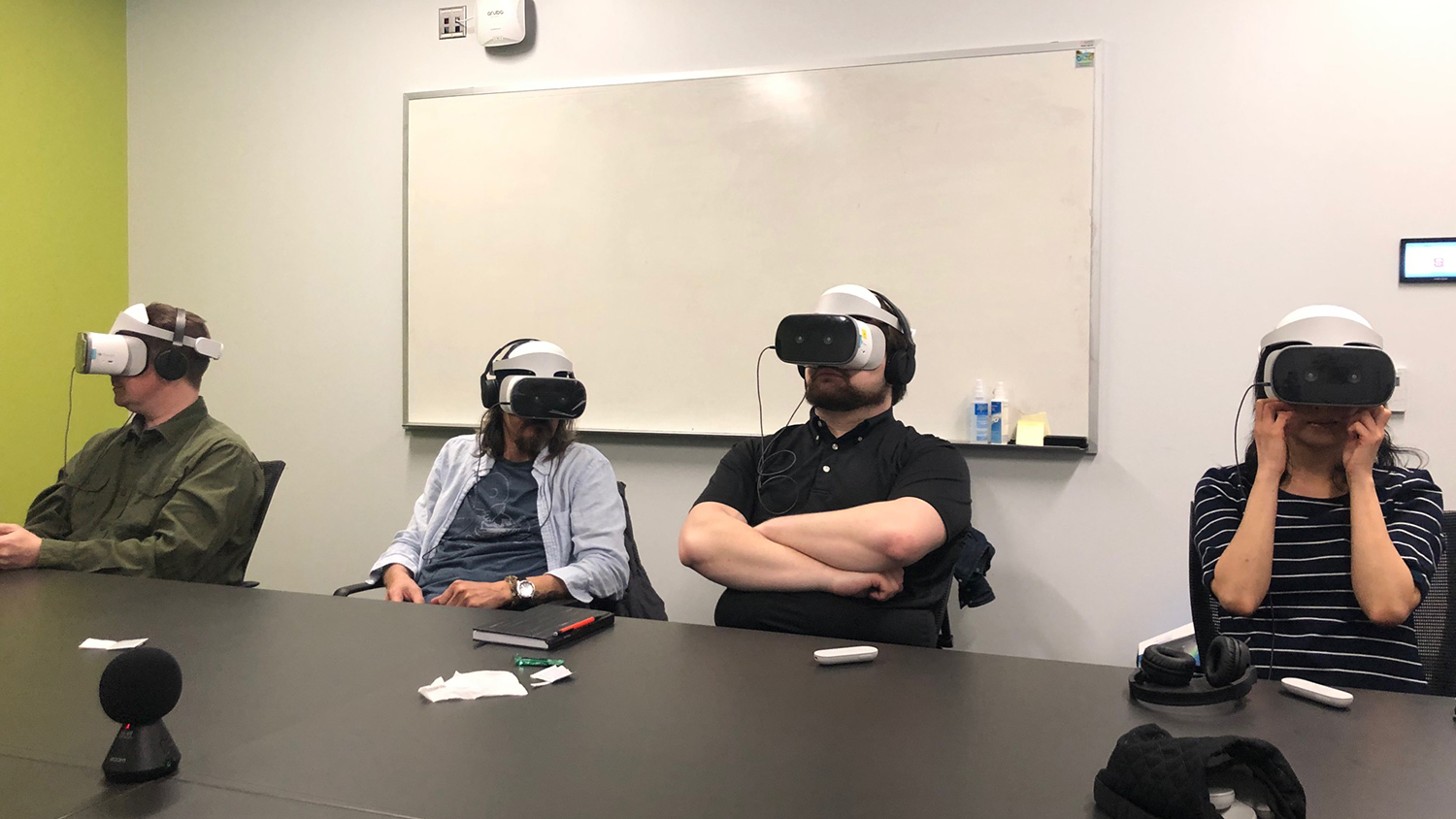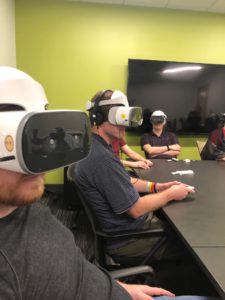DELTA Explores VR in the Classroom

As part of our new DELTA Explores series, we’re sharing how we research, test and explore the latest in immersive technology and its role in teaching and learning — how we Think before we Do.
In the latest post below, Immersive Media Support Specialist Justin Kuhn shares our thoughts and what we’ve learned about creating real-time virtual reality (VR) experiences so far.
For example, a fun finding from testing, we realized that real-time VR experiences turn users into simultaneous beings. See gif for proof ⬇️
Read the full story and feel free to share your thoughts with us! We’d love to connect with you on Twitter at @NCStateDELTA or by email at delta-communications@ncsu.edu.
Exploring the VR Classroom
Written by Justin Kuhn
In the past few months, we’ve been exploring the possibility of creating real-time virtual experiences for students to have inside the classroom. Whether that’s traveling alongside researchers to the extremes of the planet or training for scientific laboratories, college-level learners can engage in a collective adventure.

Showtime VR makes this technology a reality. Using a local-area network, the instructor controls and narrates a virtual reality video for a classroom full of students at the same time. Once synchronized, each student, who is connected through a VR Headset, will view the same video until the instructor pauses or ends the video. While less interactive than a game, this technology affords the instructor a strong ability to guarantee a quality introductory experience to all learners.
In early March, before the outbreak of COVID-19, we gathered a dozen DELTA staff to test it all out. Though a few other staff and I spent hours prepping the Lenovo Mirage Solo devices with a single video, we still encountered a few hurdles. Since the handheld controllers were wireless, we had some inference issues pairing them with a specific headset. Even after everything was set up, trying to lead a room full of adults with headsets on is more challenging than it sounds. I can’t imagine trying to get the attention of a room of college kids!
What are our next steps? With Showtime VR, the video content that we create can be distributed in a way that’s much better suited for classroom learning. With Showtime VR we’re not limited to who makes the content either. When 360° cameras become cheaper and more user friendly, students and faculty can create their own videos for real-time presentation. Whether it’s data visualization or community-gathering experiences, the application of 360° video is more approachable than ever.
- Categories:


